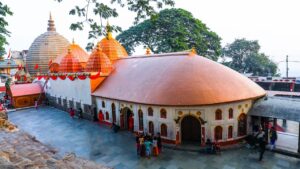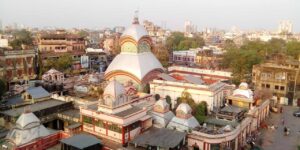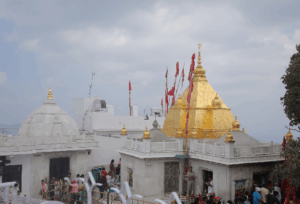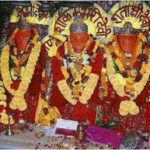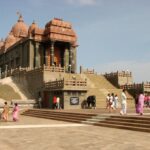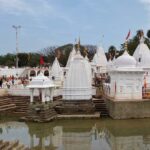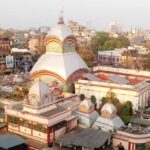Introduction
Nestled on the banks of the sacred Adi Ganga in the bustling city of Kolkata, Kalighat Kali Temple is one of the most iconic Shakti Peethas in India. Dedicated to Goddess Kali, this temple draws millions of devotees every year, seeking the fierce mother’s blessings of protection, strength, and liberation.
Mythological Significance
Kalighat is one of the 52 Shakti Peethas where the right toe of Goddess Sati is believed to have fallen. The legend originates from the story of Sati’s self-immolation and Lord Shiva’s cosmic dance of destruction. To save the universe, Lord Vishnu dismembered Sati’s body with his Sudarshan Chakra, scattering her parts across the Indian subcontinent.
The temple is thus a powerful symbol of Shakti (divine feminine energy), especially in her Kali form—fierce, protective, and motherly.
Temple Architecture and Features
The current structure of the Kalighat Temple dates back to the 19th century, although the site has been revered for over a thousand years. Key architectural highlights include:
-
The Sanctum (Garbhagriha): Houses a unique idol of Kali with three large eyes, a long tongue made of gold, and four arms.
-
The Natmandir (prayer hall): A spacious hall for devotees to offer prayers and participate in rituals.
-
The Sosthi Tala: A sacred altar dedicated to Goddess Sosthi and other female deities.
The image of Kali here is not made of stone but crafted from black touchstone, giving her a mystical presence that radiates power.
Spiritual Significance
Kalighat Kali is not just a deity; she is ‘Ma’ (Mother) to the people of Bengal and beyond. Her fierce form represents the destruction of evil, but also the nurturing and protective aspects of the divine feminine.
Devotees come here to:
-
Seek protection from negative energies
-
Pray for justice and strength
-
Perform rituals for spiritual purification
Famous Rituals and Offerings
-
Animal sacrifice, though controversial, is still practiced by some as a traditional ritual.
-
Offerings of red hibiscus flowers, sweets, and coconut are commonly made.
-
Special Pujas during Kali Puja, Navaratri, and Diwali attract massive crowds.
Nearby Sacred Sites
While visiting Kalighat, pilgrims often explore:
-
Adi Ganga (ancient Ganges) river for ritual baths
-
Kalighat Art market for spiritual souvenirs
-
Other nearby temples like Dakshineswar Kali Temple and Belur Math
Traveler’s Note
-
The temple is located in South Kolkata, easily accessible via metro and taxis.
-
Best time to visit: Early mornings or during Kali Puja (October/November).
Conclusion
Kalighat Kali Temple is not just a religious site—it is a spiritual powerhouse, where emotion, tradition, and divine energy converge. Whether you’re a pilgrim seeking blessings or a traveler seeking meaning, Kalighat offers a transformative experience wrapped in devotion and mysticism.

